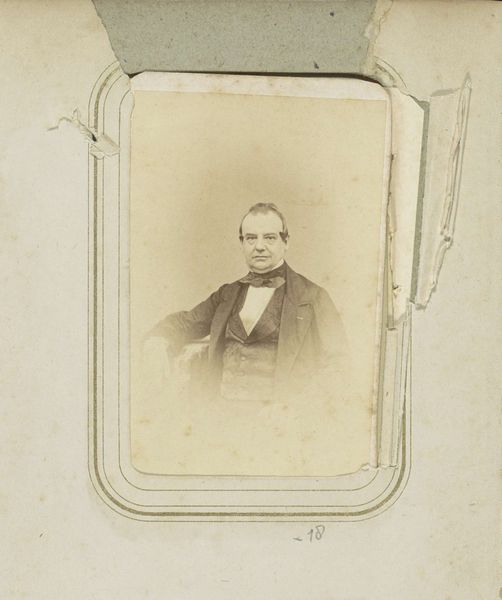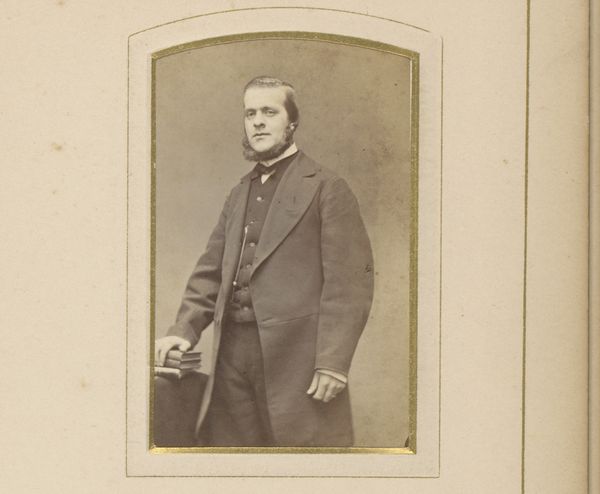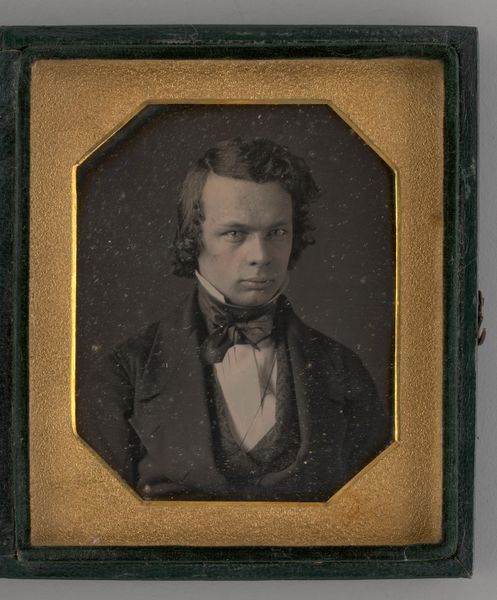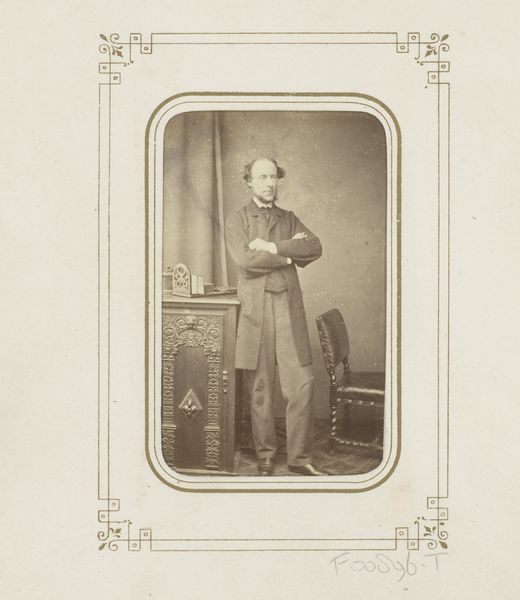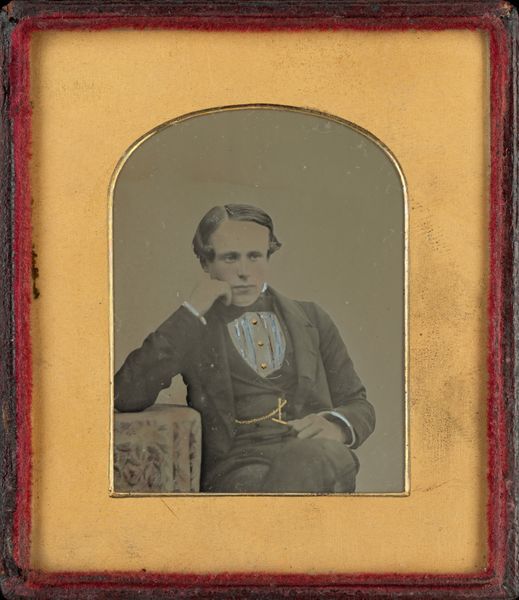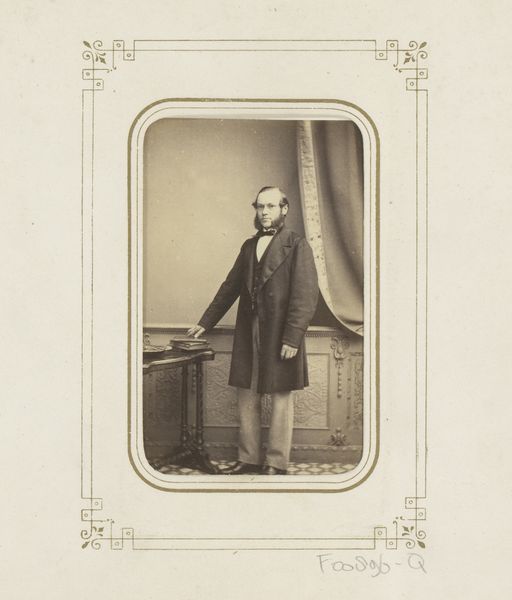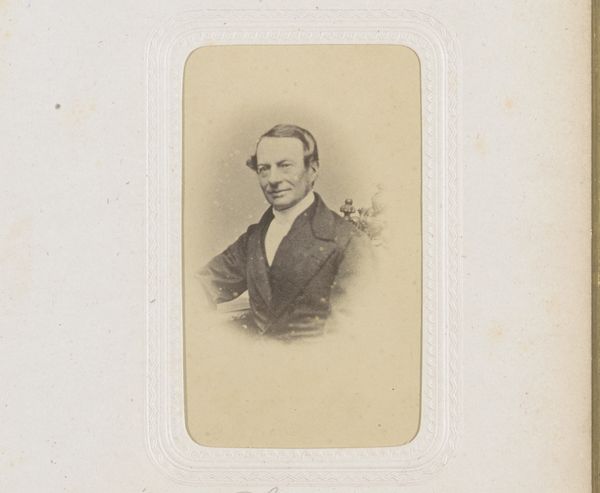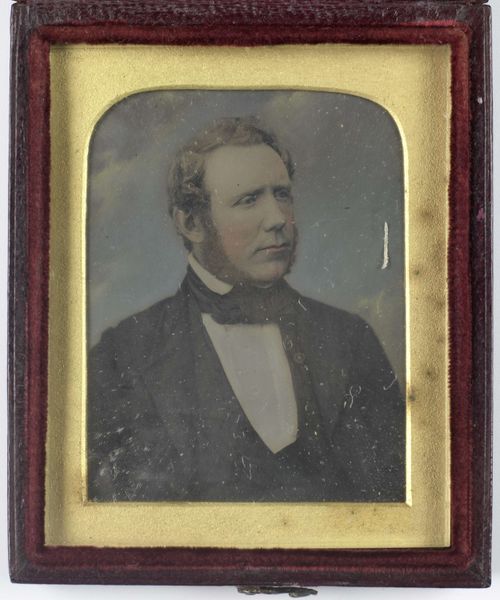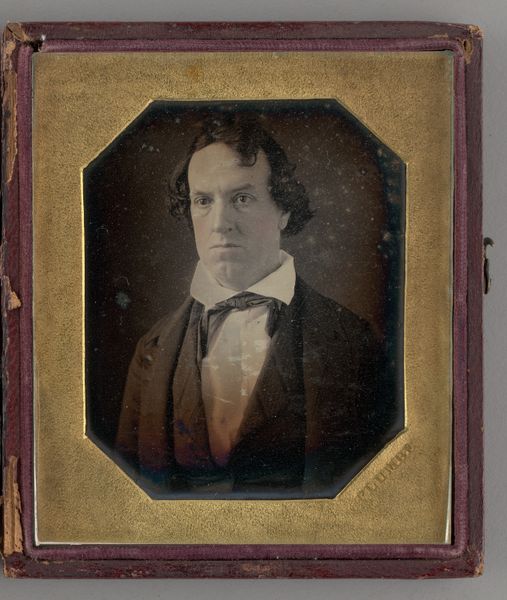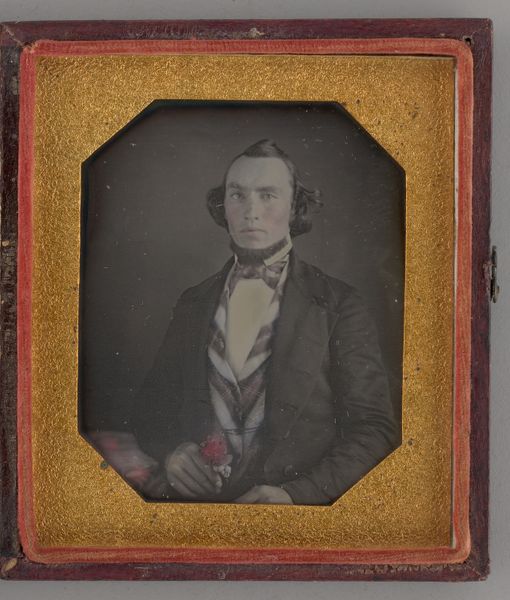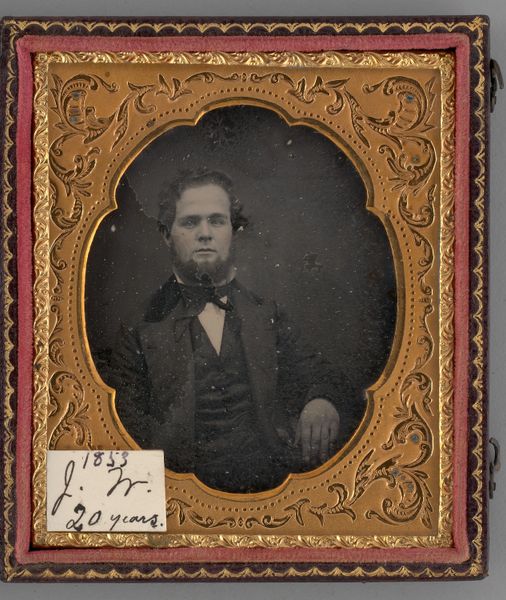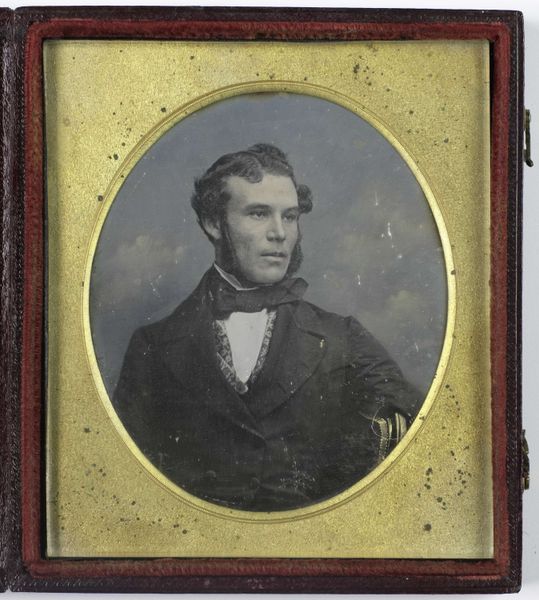
Untitled (Portrait of a Man at a 3/4 Angle) 1845
0:00
0:00
daguerreotype, photography
#
portrait
#
16_19th-century
#
daguerreotype
#
photography
#
romanticism
#
men
#
united-states
#
academic-art
#
realism
Dimensions: 8 × 7 cm (3 1/4 × 2 3/4 in., plate); 9.3 × 16.2 × 1.1 cm (open case); 9.3 × 8.1 × 1.9 cm (case)
Copyright: Public Domain
This is an untitled portrait by John Jabez Edwin Mayall, a daguerreotype, a photographic process popular in the mid-19th century. Consider this man's gaze. He’s captured in a moment of contemplation, his refined attire speaking to a certain social standing, reflective of the era’s emphasis on class and decorum. Mayall was working during a time when photography was both novel and becoming increasingly accessible. Yet, portraiture was still largely the domain of the middle and upper classes. The daguerreotype process itself required a degree of performance from the sitter, who had to remain still for an extended period. What does it mean to have a portrait taken and to be captured at a specific moment in time? This image offers a glimpse into the past, inviting reflection on the identities and representations that photography both solidified and democratized. This portrait is more than just a picture; it's a preserved moment, a whisper from history about identity, class, and representation.
Comments
No comments
Be the first to comment and join the conversation on the ultimate creative platform.

